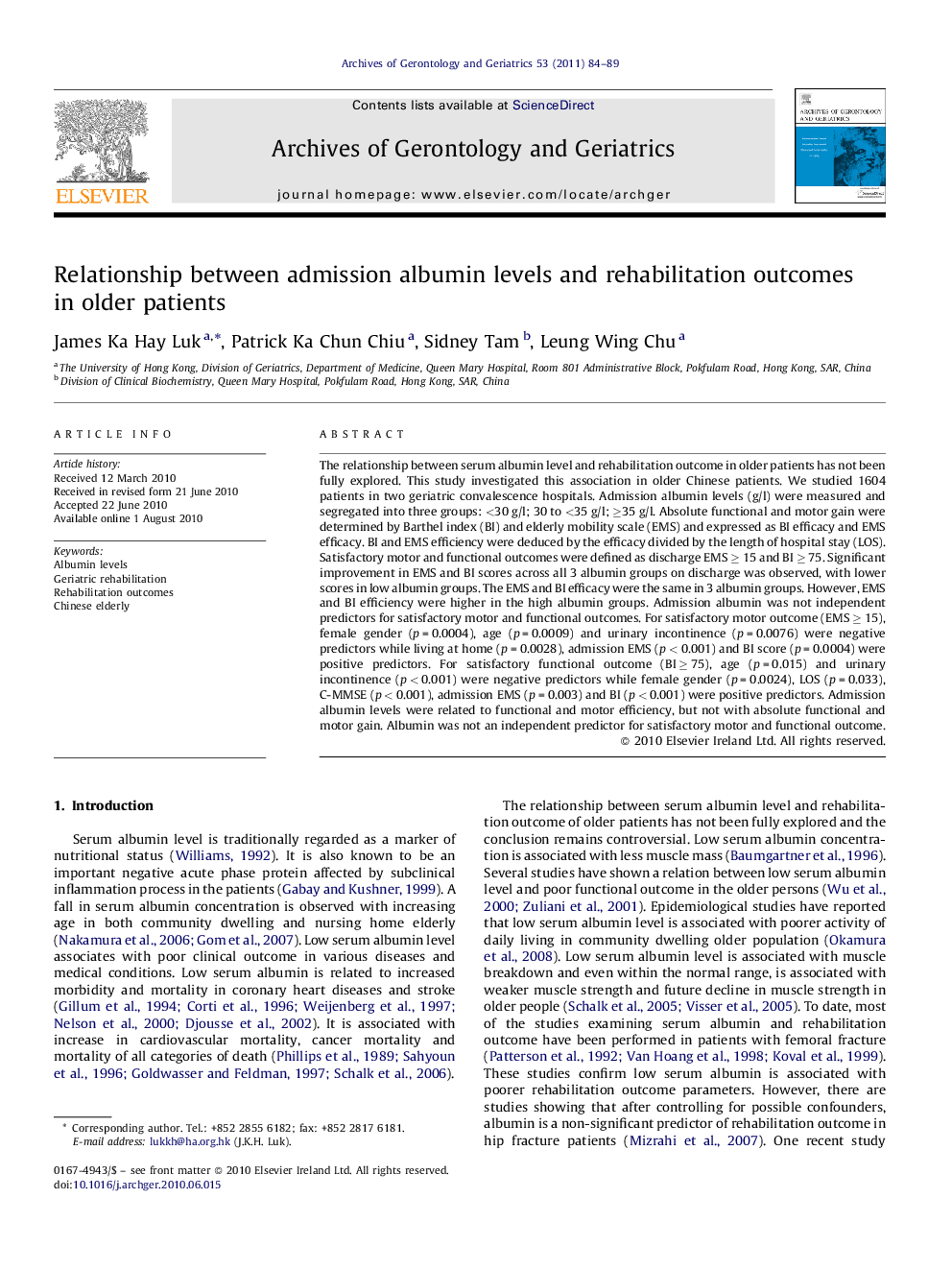| Article ID | Journal | Published Year | Pages | File Type |
|---|---|---|---|---|
| 1903050 | Archives of Gerontology and Geriatrics | 2011 | 6 Pages |
The relationship between serum albumin level and rehabilitation outcome in older patients has not been fully explored. This study investigated this association in older Chinese patients. We studied 1604 patients in two geriatric convalescence hospitals. Admission albumin levels (g/l) were measured and segregated into three groups: <30 g/l; 30 to <35 g/l; ≥35 g/l. Absolute functional and motor gain were determined by Barthel index (BI) and elderly mobility scale (EMS) and expressed as BI efficacy and EMS efficacy. BI and EMS efficiency were deduced by the efficacy divided by the length of hospital stay (LOS). Satisfactory motor and functional outcomes were defined as discharge EMS ≥ 15 and BI ≥ 75. Significant improvement in EMS and BI scores across all 3 albumin groups on discharge was observed, with lower scores in low albumin groups. The EMS and BI efficacy were the same in 3 albumin groups. However, EMS and BI efficiency were higher in the high albumin groups. Admission albumin was not independent predictors for satisfactory motor and functional outcomes. For satisfactory motor outcome (EMS ≥ 15), female gender (p = 0.0004), age (p = 0.0009) and urinary incontinence (p = 0.0076) were negative predictors while living at home (p = 0.0028), admission EMS (p < 0.001) and BI score (p = 0.0004) were positive predictors. For satisfactory functional outcome (BI ≥ 75), age (p = 0.015) and urinary incontinence (p < 0.001) were negative predictors while female gender (p = 0.0024), LOS (p = 0.033), C-MMSE (p < 0.001), admission EMS (p = 0.003) and BI (p < 0.001) were positive predictors. Admission albumin levels were related to functional and motor efficiency, but not with absolute functional and motor gain. Albumin was not an independent predictor for satisfactory motor and functional outcome.
